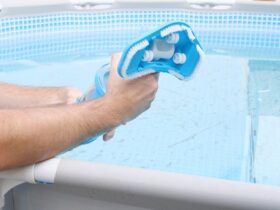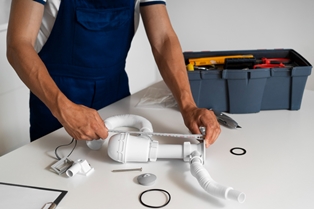Alkalinity in pool water refers to its ability to resist changes in pH levels. It’s a crucial aspect of pool maintenance, as it helps stabilize pH levels, preventing rapid fluctuations that can lead to water imbalances and discomfort for swimmers. High alkalinity can result in cloudy water, scale formation, and reduced effectiveness of sanitizers.
Testing Alkalinity Levels
Before taking steps to lower alkalinity, it’s essential to test the water to determine its current alkalinity levels accurately. You can use a pool testing kit or seek assistance from a professional pool service provider for precise measurements.
Reasons for High Alkalinity
Several factors can contribute to high alkalinity in pool water, including:
1. Chemical Imbalance
An imbalance in the pool’s chemical composition, particularly with alkaline substances such as bicarbonates, can elevate alkalinity levels.
2. Water Source
The source of water used to fill the pool may naturally have high alkalinity levels, contributing to overall pool alkalinity.
3. Overuse of Alkaline Products
Frequent use of alkaline-based products for pool maintenance, such as certain cleaning agents or pH adjusters, can raise alkalinity levels over time.
Lowering Alkalinity
Once you’ve determined that your pool’s alkalinity is too high, it’s crucial to take corrective measures promptly. Here are some effective methods to lower alkalinity:
1. Acid Injection
Injecting muriatic acid or sodium bisulfate into the pool water can help neutralize alkalinity levels. However, it’s essential to follow safety precautions and manufacturer’s instructions carefully when handling these chemicals.
2. Dilution
Partially draining the pool and refilling it with fresh water can dilute alkalinity levels. This method is effective for reducing alkalinity if it’s primarily due to high levels in the existing water source.
3. Use of Acidic Products
Certain acidic products, such as dry acid or pH decreaser, can be added directly to the pool water to lower alkalinity. Again, it’s crucial to follow product instructions and recommended dosages for safe and effective results.
4. Aeration
Aerating the pool water by increasing surface agitation or using a fountain or waterfall feature can help off-gas excess carbon dioxide, which can contribute to high alkalinity levels.
Preventing High Alkalinity

Prevention is key to maintaining balanced alkalinity levels in your pool. Here are some tips to prevent alkalinity from becoming too high:
1. Regular Testing
Regularly test your pool water for alkalinity and other chemical levels to catch any imbalances early and address them promptly.
2. Proper Chemical Balance
Maintain proper chemical balance in your pool by regularly adding the right amounts of pH adjusters, sanitizers, and other pool chemicals.
3. Monitor Water Source
If you’re filling your pool with water from a source known to have high alkalinity, consider using a water softener or pre-treating the water to reduce alkalinity levels before adding it to the pool.
4. Limit Alkaline Products
Be mindful of the types and quantities of alkaline-based products you use for pool maintenance, as excessive use can lead to elevated alkalinity levels over time.
FAQs about How to Lower Alkalinity in Your Pool
We recommend testing your pool’s alkalinity at least once a week, especially during peak swimming season.
While vinegar can lower alkalinity to some extent, it’s not recommended for large-scale adjustments as it may affect other chemical levels in the pool.
Lowering alkalinity can impact pH levels, so it’s essential to monitor both parameters simultaneously and make adjustments accordingly.
Swimming in a pool with high alkalinity may cause discomfort and skin irritation, so it’s best to address the issue promptly to maintain a safe swimming environment.
Regular maintenance, proper chemical balance, and using water from low-mineral sources can help prevent high alkalinity in pools.
Conclusion
Maintaining proper alkalinity levels in your pool is essential for ensuring clear, balanced water that’s safe and enjoyable for swimming. By understanding the causes of high alkalinity and implementing effective strategies to lower and prevent it, you can keep your pool in optimal condition year-round.











Find Us on Socials